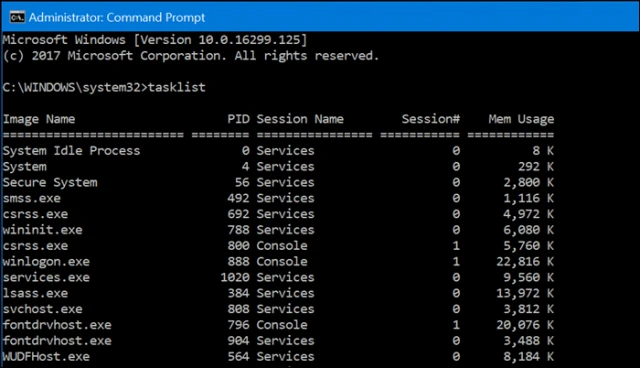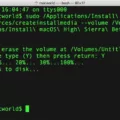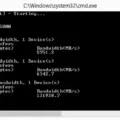Are you having trouble with a process that is running on your computer? Are you looking for an effective way to terminate it? The taskkill command may be the answer.
The taskkill command is a Windows utility that allows users to terminate processes from the command line. It is part of the Windows Task Manager and can be used to end processes that are unresponsive or no longer needed.
The taskkill command can be used to end a process or multiple processes by their process ID (PID) or image name. You can find the PID of a process by using the tasklist command. To use the taskkill command simply type “taskkill” followed by either the image name or PID of the process you wish to terminate:
taskkill /f /im [image name] OR taskkill /f /pid [PID]
The “/f” flag tells the command to forcefully terminate and “/im” specifies that you are using an image name and not a PID. You can also use other flags such as “/t” which terminates all related processes in addition to the specified one, or “/fi” which allows you to filter based on other criteria such as memory usage, etc.
Once you have terminated a process, you can verify its termination by using the ps aux | grep [PID] command, which will return any matching results for that particular PID. If no results are returned then it has been successfully terminated.
So if you need an easy way to terminate unresponsive processes from the Windows Command Line then look no further than the handy taskkill utility!

Using Taskkill
Taskkill is a command-line utility provided by Windows that allows you to terminate processes from the command prompt. To use taskkill, you need to open a Command Prompt window. To do this, click Start > Run and type ‘cmd’ then hit Enter or click OK. In the command prompt window that appears, you can type ‘taskkill /f /im [process name]’ (without quotes) and hit Enter to terminate a process. For example, if you wanted to terminate an Excel process, you would type ‘taskkill /f /im excel.exe’ and hit Enter. This will terminate any running Excel processes. You can also use taskkill to terminate multiple processes at once by specifying multiple process names separated by spaces. For example, if you wanted to terminate both Excel and Word processes, you would type ‘taskkill /f /im excel.exe winword.exe’ and hit Enter.
Using Taskkill in Command Prompt
Taskkill is a command available in Windows operating systems that allows you to end one or more tasks or processes. It replaces the kill tool and can be used by providing the process ID (PID) or image name of the process(es). To determine the PID, you can use the tasklist command.
Using the Taskkill Command in Linux
The taskkill command in Linux is used to terminate a process or task from the command line, using its corresponding Process Identifier (PID). To use the taskkill command, you must first identify the PID of the process you wish to terminate. You can do this by running the pidof command and passing in the name of the process as an argument. For example, if you wanted to find the PID of Firefox, you would run $ pidof firefox.
Once you have identified the PID of your desired process or task, you can use it in conjunction with the taskkill command to terminate it. The syntax for this is $ taskkill -PID. Replacing with the actual PID number of your desired process or task.
For example, if we wanted to terminate a task with a PID of 22171 we would run $taskkill -PID 22171. If successful, no output will be printed and your process or task will be successfully terminated.
Killing a Process Using the Kill Command
The kill command is a command line utility used to terminate processes from the terminal. To use the kill command, you must first obtain the process ID of the process that you want to terminate. You can do this by using the ps command with the -fu option and specifying the user name of the process you want to terminate. Once you have obtained the process ID, you can then use kill [signal-number] pid to send a signal to terminate the process. You may also specify a signal number if you wish to send a specific type of termination signal to the process. After sending this signal, you should verify that the process has been terminated by running ps again and ensuring that it no longer appears in the list of processes.
Killing Tasks Without Task Manager
To taskkill without using Task Manager, you can use the Command Prompt. To do this, press Windows key + R to open the Run dialog box. Then, type in ‘cmd’ and press Enter to open the Command Prompt. Once inside the Command Prompt, type in ‘tasklist’ and press Enter to see a list of tasks and programs running on your computer. To kill a specific program or task, type in ‘taskkill/im [name_of_program].exe’ and press Enter. This should force quit that particular program or task without having to use the Task Manager.
Forcing a Quit on Linux
If an application or utility running on Linux becomes unresponsive, there are several ways to force quit it. The most straightforward way is to simply click the X in the corner of the window that the program is running in. If this option is not available, you can use System Monitor to find and terminate the process associated with the program. Alternatively, you can use a terminal command such as ‘xkill’, ‘kill’, ‘pkill’, or ‘killall’ to terminate the process. To use any of these commands, open a terminal window and enter the command followed by the name of the program you want to force quit. For example, typing ‘kill firefox’ would force quit Firefox.
Conclusion
In conclusion, the taskkill command is a powerful tool that can be used to terminate a process or task from the command line. It can be used to stop any process, including Excel, Word and Firefox processes, using either the process ID or image name. This command replaces the kill tool and is an effective way to manage tasks running on your system. With this command, you can easily manage your tasks and processes in a safe and efficient manner.













